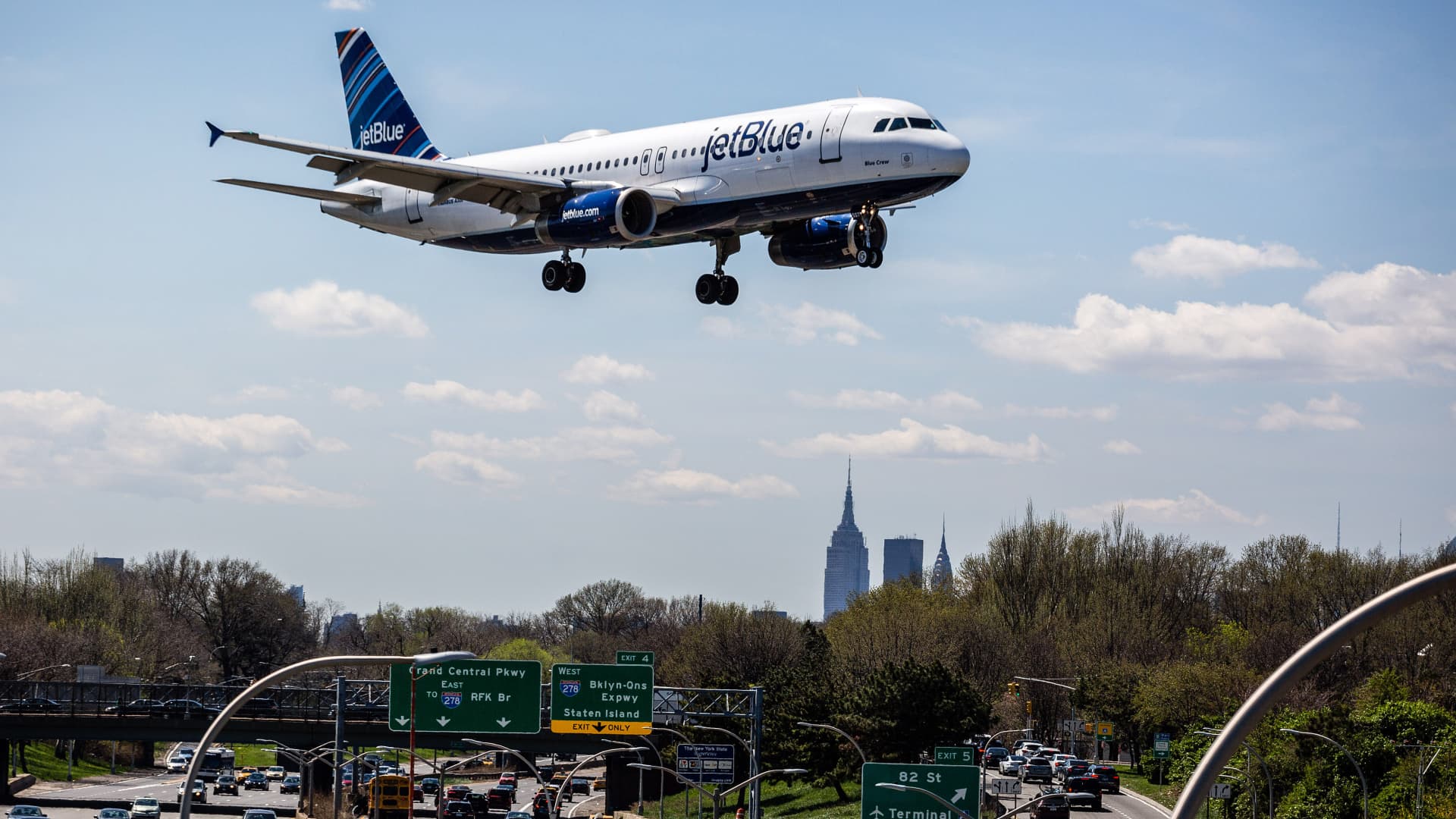JetBlue Airways eked out a $57 million profit for the third quarter as strong travel demand and higher fares helped the carrier cover more expensive fuel and other costs.
The New York-based airline’s revenue rose 30% during the quarter from the same period last year to $2.56 billion, in line with analysts’ estimates. JetBlue’s operating margin narrowed to 5.4% from 9.4% a year earlier after expenses rose nearly 36% from the same period of 2021.
JetBlue’s CEO, Robin Hayes, said the carrier expects “another solid quarter of mid-single-digit pre-tax margins in the fourth quarter, and we’ll look to expand on that further in 2023 as we continue to restore our earnings power.”
Here’s how JetBlue performed in the third quarter, compared with Wall Street expectations according to Refinitiv consensus estimates:
- Adjusted earnings per share: 21 cents vs. an expected 23 cents.
- Total revenue: $2.56 billion vs. an expected $2.56 billion.
JetBlue’s shares fell close to 3% Tuesday, recovering slightly from earlier losses. Other airlines’ shares rose, and Southwest, United and Delta outpaced the S&P 500‘s gains.
“While the revenue outlook is strong, we have to continue to be thoughtful about every penny we spend, particularly in today’s environment, since our entire business model of competing with lower fares is based on having lower costs relative to the legacy airlines,” JetBlue’s CFO, Ursula Hurley, wrote in a note to employees.
Hurley said despite the quarterly results, the airline won’t post a full-year profit in 2022 “after the bumps we faced in the first half of the year with the Omicron variant and operational challenges.”
Larger U.S. carriers have been upbeat about travel demand and largely outperformed analysts’ expectations on resilient bookings, particularly on the return of international trips.
Airline executives say they are limited in how much capacity they can add because of shortfalls in aircraft and pilots, which is helping keep fares high. Airlines have also held back on adding flights after a host of costly operational meltdowns prompted them to add more slack in the system.
JetBlue said it plans to expand flying 1% to 4% in the fourth quarter compared with 2019 levels. Airlines are comparing capacity levels with those of three years ago to show their recovery from the Covid pandemic.
“Given the continued fragile aviation ecosystem, we are taking a cautious approach to operational investments and more conservative planning assumptions that we put in place for the summer,” CFO Hurley said in the earnings release.
The airline forecast fourth-quarter unit costs, excluding fuel, to be up as much as 10.5% from three years ago. It expects unit revenues to rise as much as 19%. Unit revenues in the third quarter were up more than 23% from three years earlier.
Hurley said the airline has hedged about 27% of its fourth-quarter fuel consumption.
JetBlue over the summer struck a deal to acquire budget airline Spirit. Spirit’s shareholders last week overwhelmingly voted in favor of the $3.8 billion takeover, which now faces a high hurdle with federal regulators.
COO Joanna Geraghty said Tuesday the airline is well-positioned to handle an economic downturn thanks to more segmentation of fare classes, from premium seats to bare-bones basic economy fares.
“As we look to 2023, we take comfort in the fact that the U.S. economy is much larger than it was prior to the pandemic, while industry capacity is still below pre-pandemic levels, suggesting that our industry’s experience with a potential 2023 economic downturn could look quite different than historical downturns,” COO Geraghty said during the quarterly call.
She added that the airline has slowed its hiring pace for flight attendants and airport workers and is offering some unpaid time off during weaker demand periods this fall.
